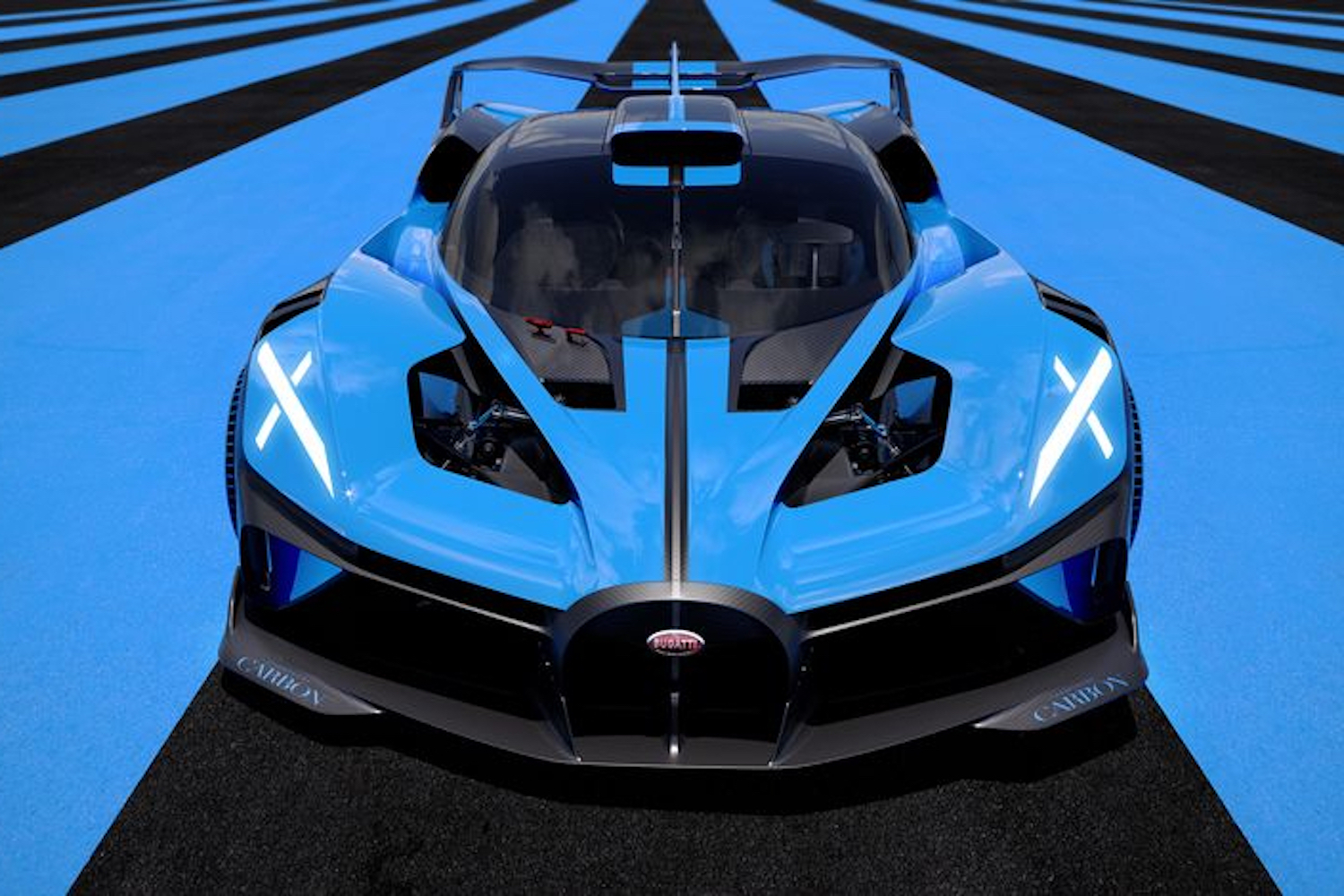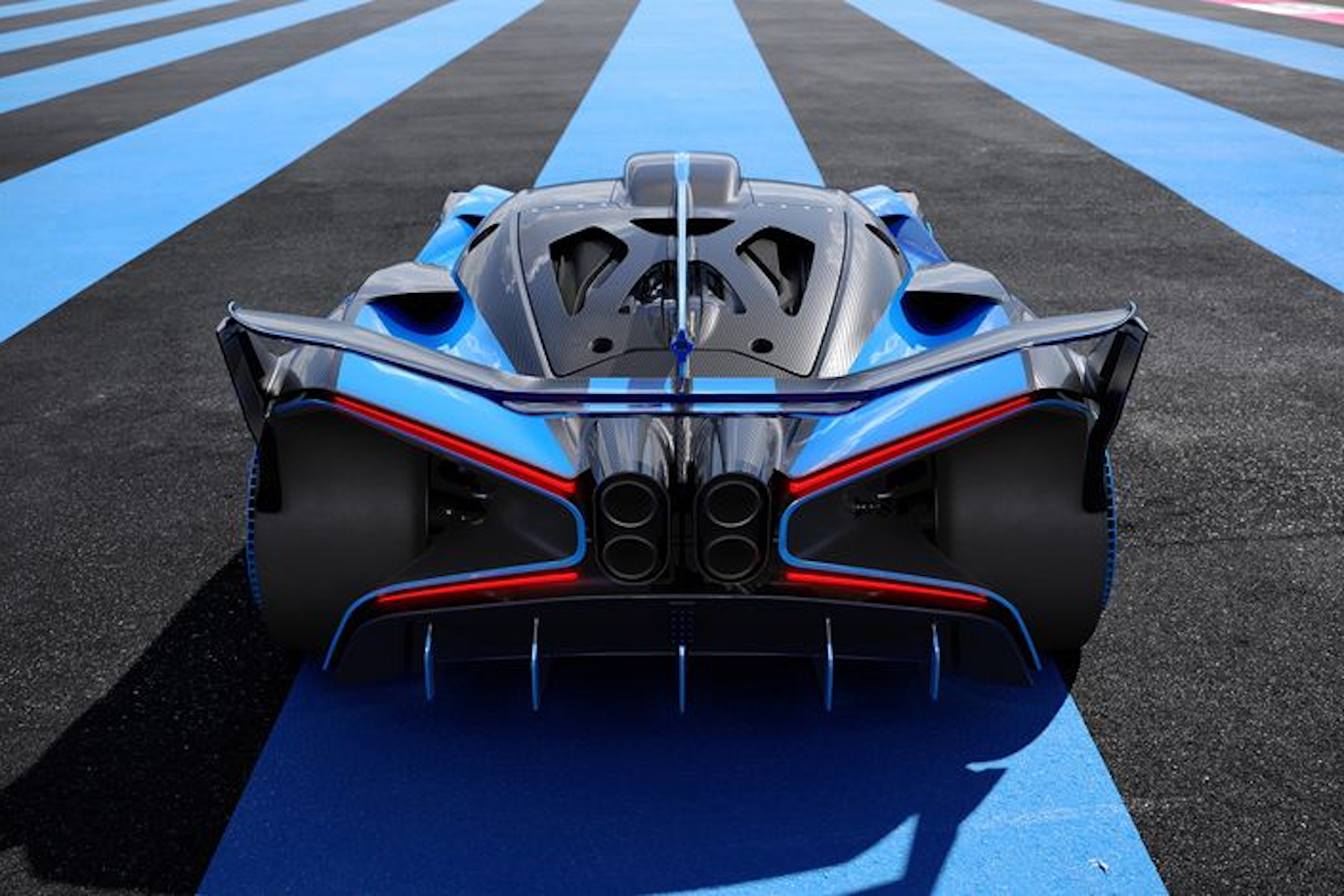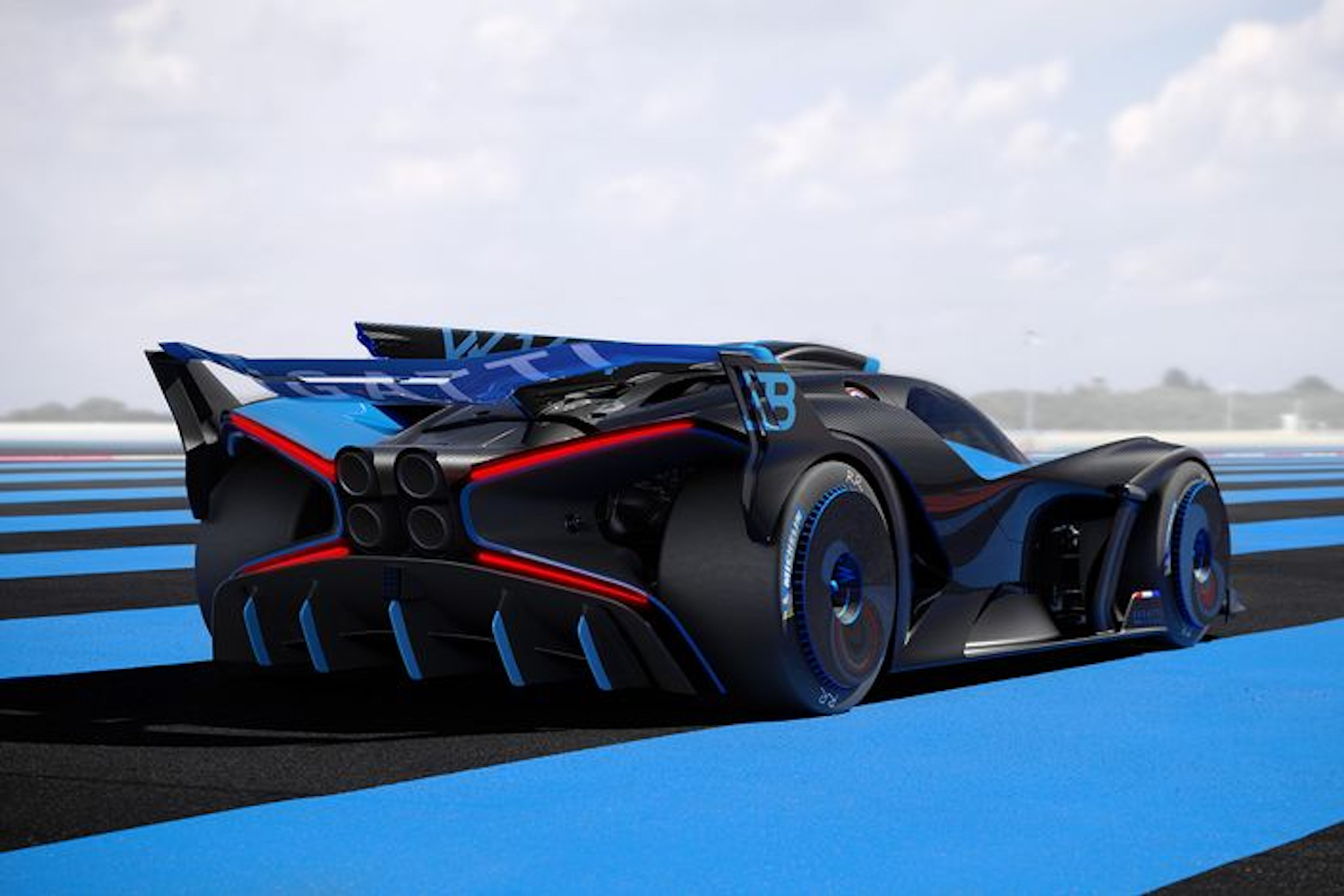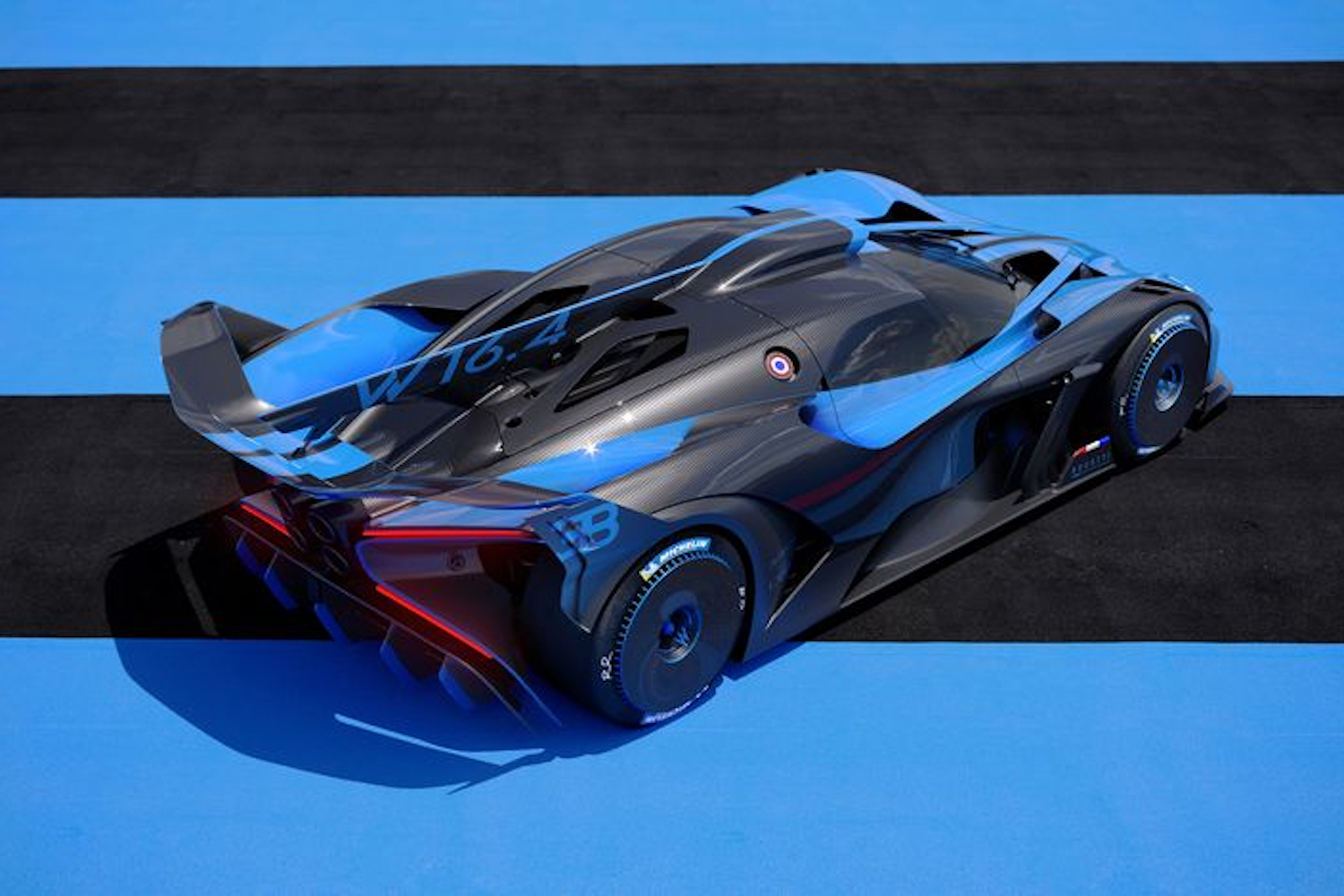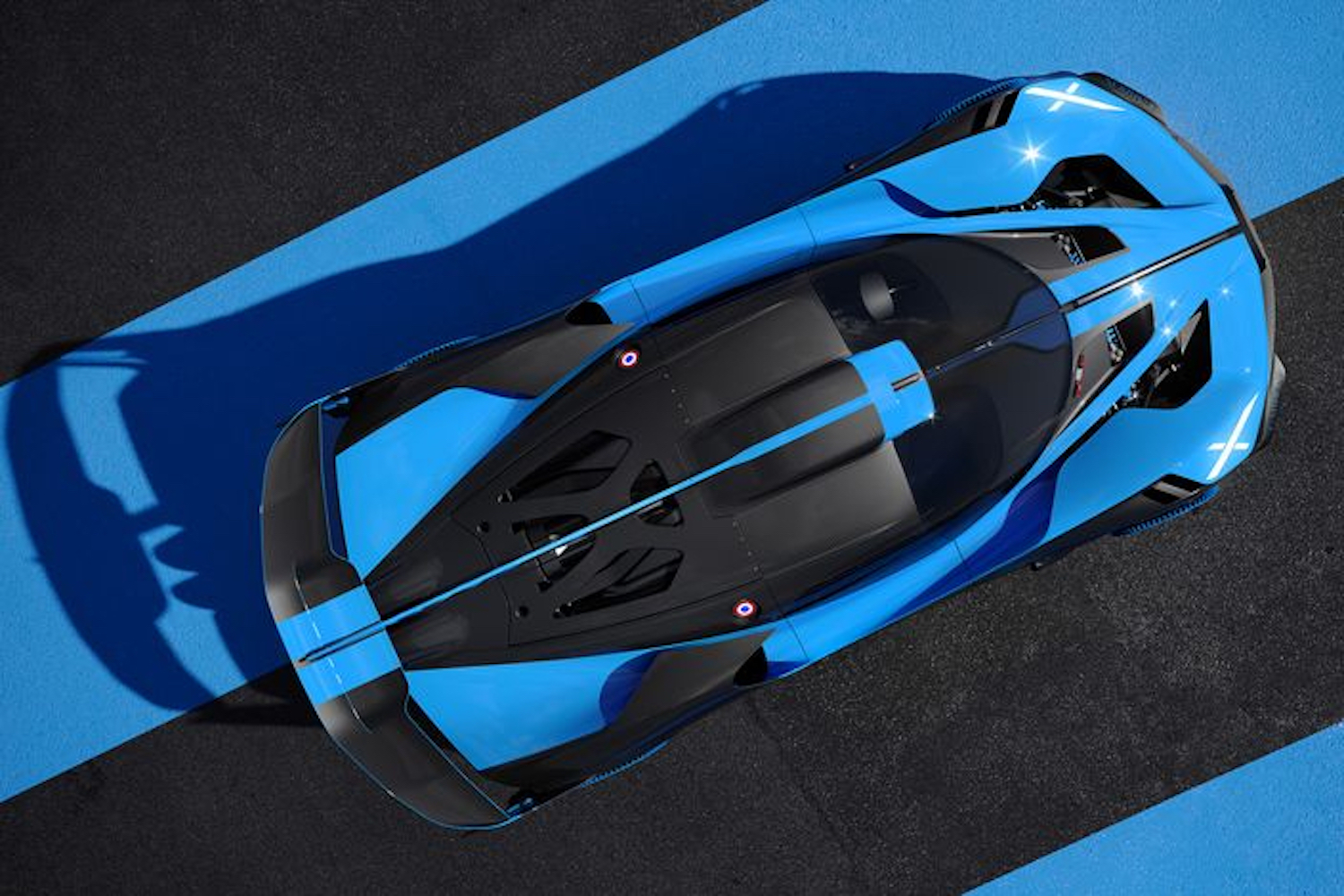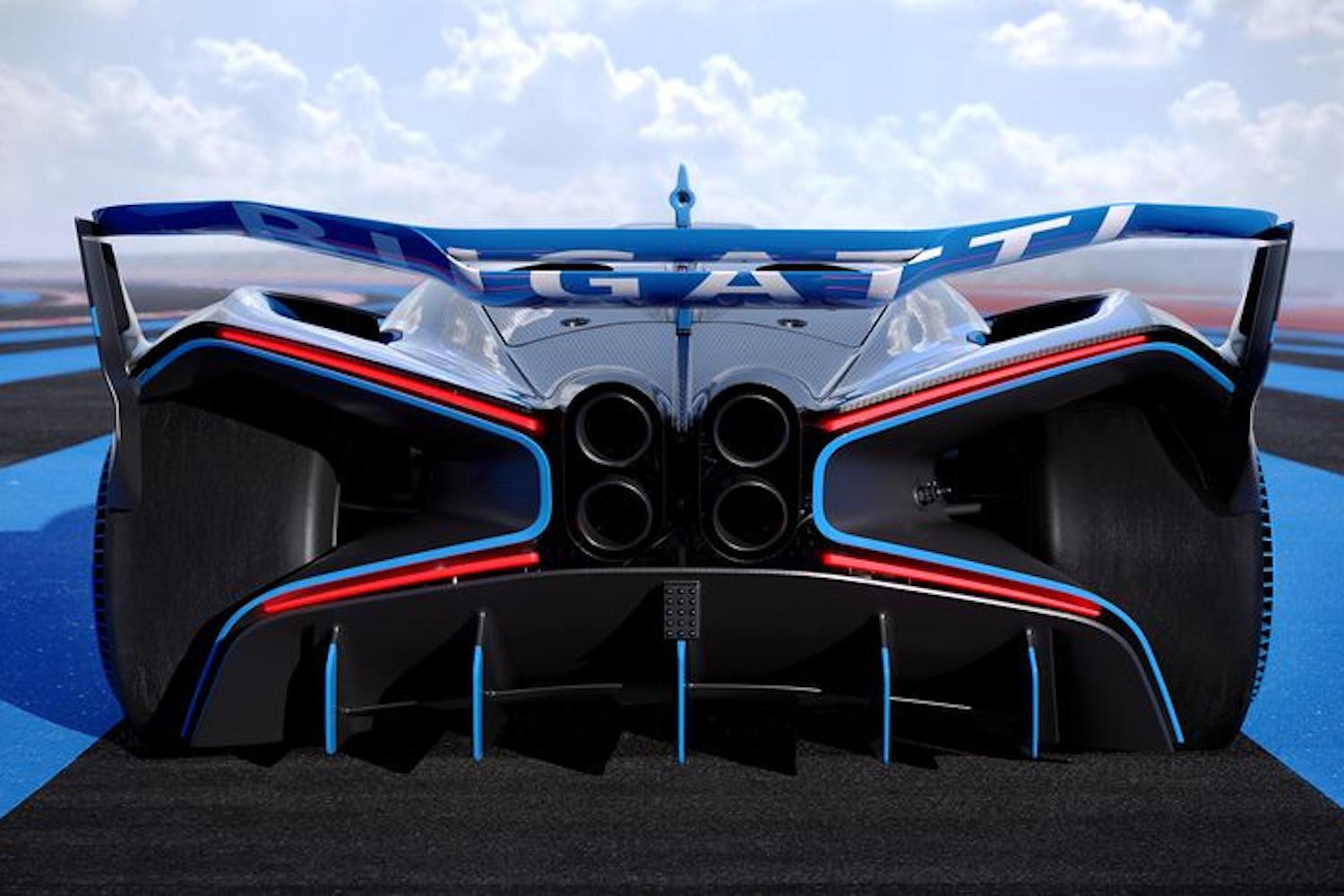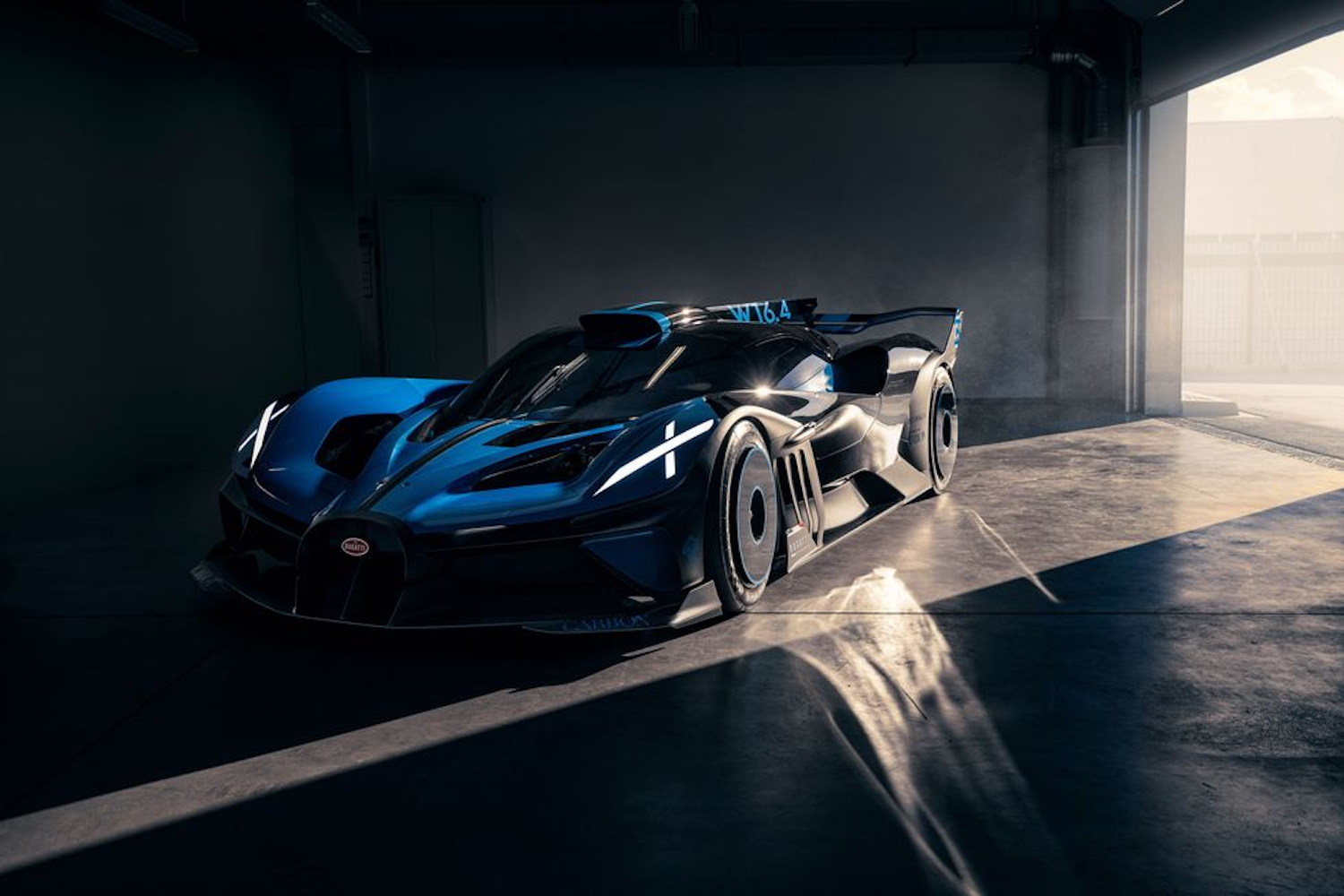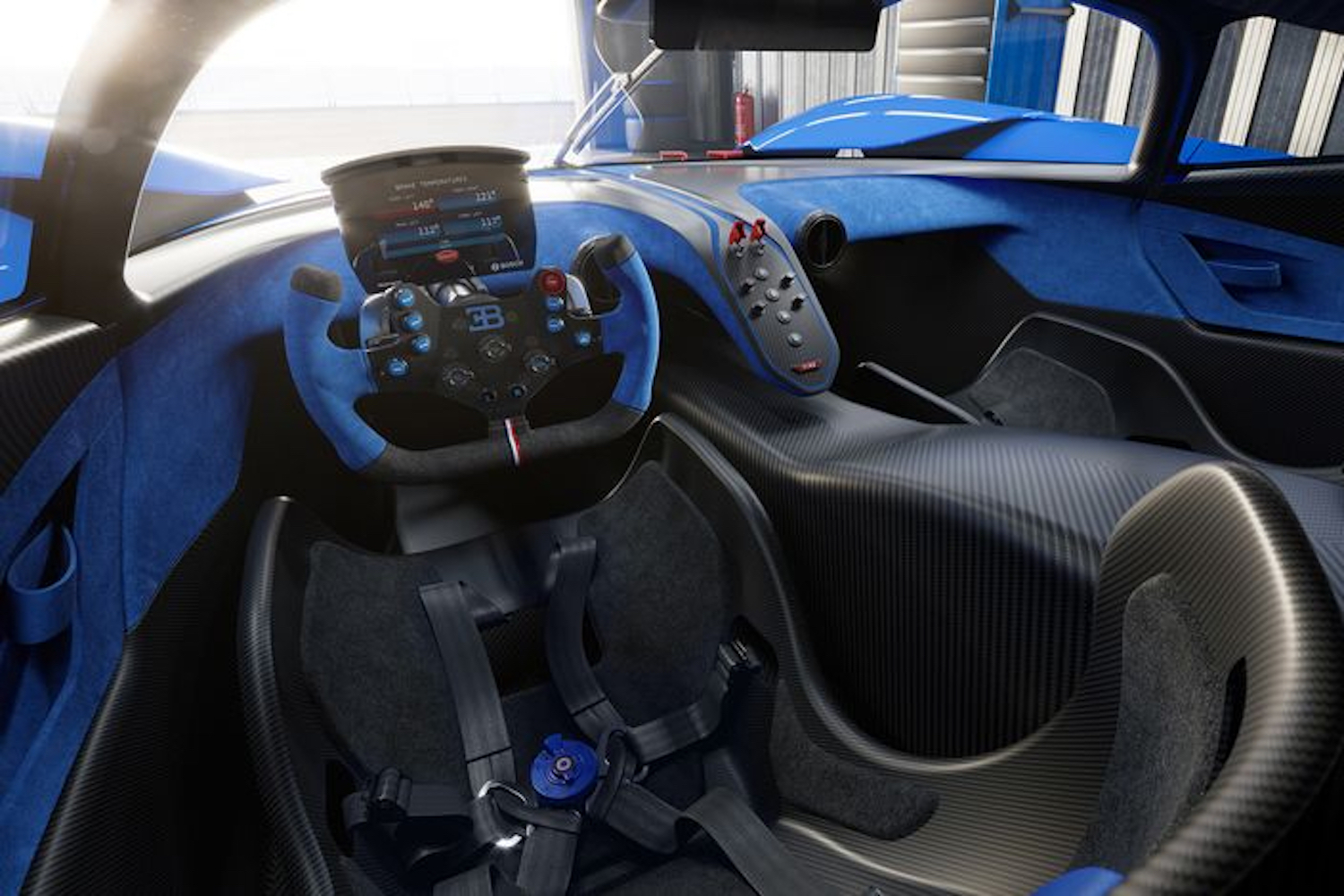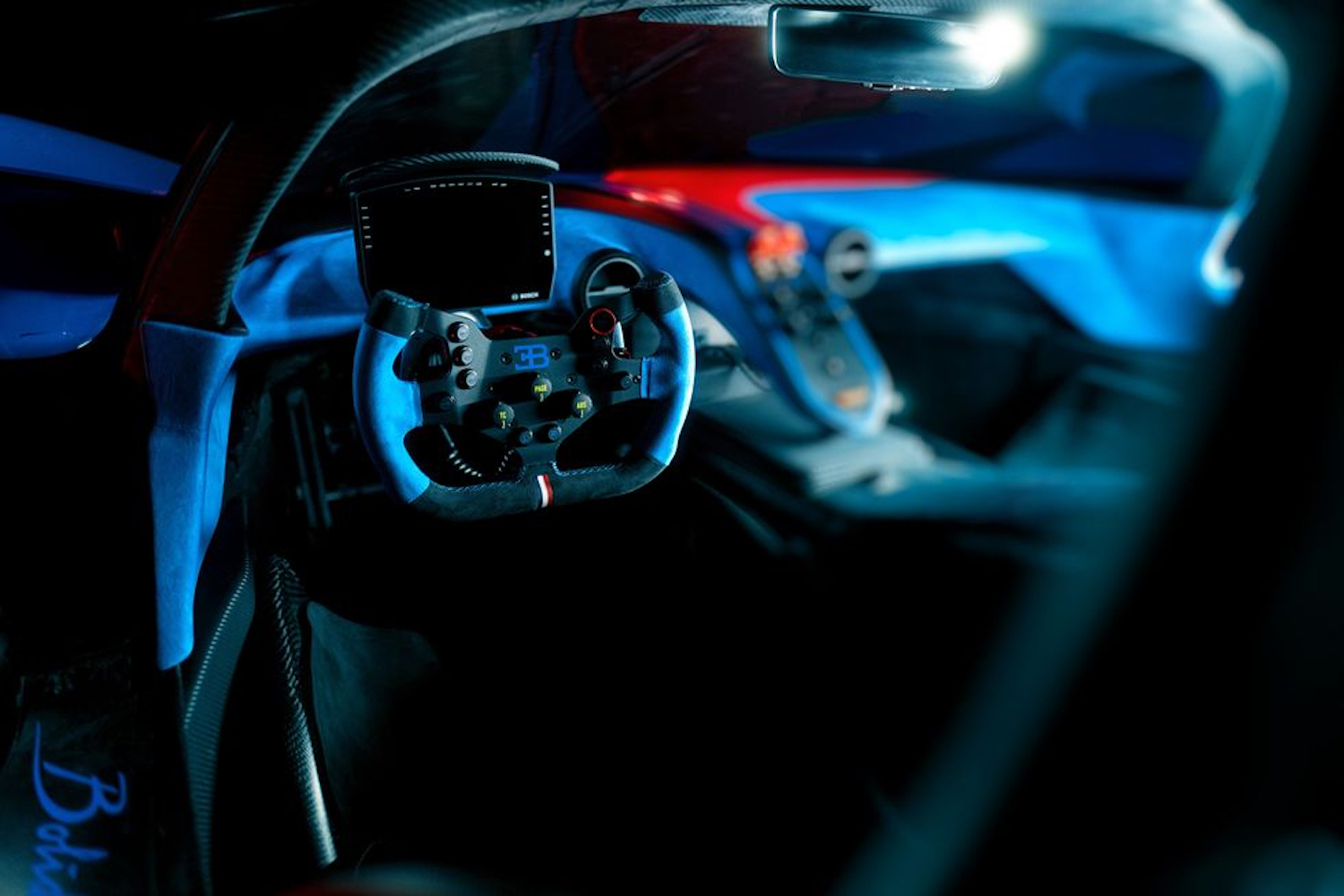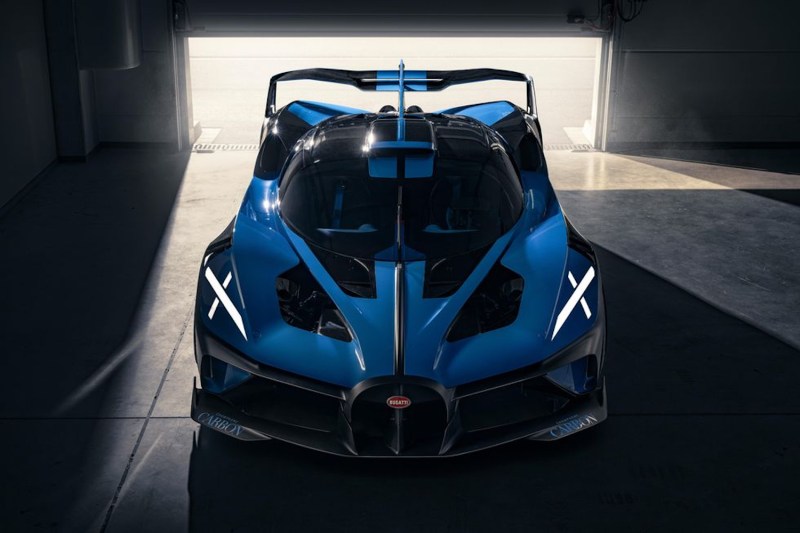
Bugatti’s hypercars are built to do one thing: Go extremely fast in a straight line. More recently, the automaker has revealed that it can build cars that can tackle corners at insane speeds with hypercars like the Divo and Pur Sport. Bugatti really wants to be taken seriously when it comes to track-oriented vehicles. So, it did what any other automaker would do — create a radical concept. The Bolide concept that came out in December 2020 was Bugatti’s way of flexing its muscles and now, it’s putting the vehicle into production.
Related Guides
At The Quail Motorsport Gathering, Bugatti announced that 40 units of the Bolide would be built. Each one will cost around $4.8 million, making it one of the most expensive track specials ever built. For that kind of money, wealthy individuals would be able to purchase a few seasons of racing in a GT3 championship. That, though, is far from the point. Anyone with money and track experience can get a GT3 racer. Only someone with lots and lots of money can purchase a Bolide.
The concept version of the Bolide featured a quad-turbocharged W16 engine rated at 1,825 horsepower and 1,365 pound-feet of torque. In the production version, the engine has been tuned down to 1,578 horsepower and 1,180 pound-feet of torque. The difference comes down to what kind of fuel the engine can run on. The concept was tuned on 110-octane race fuel, while the production version has been tuned to run on premium gas from your local gas station.
Bugatti hasn’t confirmed what kind of transmission the Bolide will come with, but the concept featured a seven-speed dual-clutch automatic transmission. The company’s all-wheel-drive system was also included. You don’t really expect a track-only car to come with all-wheel drive, but with roughly 1,600 horsepower on tap, we think drivers will be happy to have some help putting that power down safely.
Beyond the powertrain, Bugatti has obviously spent a lot of time designing the body to raise hell on the track. When creating the Bolide, Bugatti managed to keep weight down to roughly 3,200 pounds, which is a featherweight level compared to the brand’s other hypercars. The track car has a carbon-fiber monocoque, doors that fold upward like an LMP1 racing car, and an aggressive body kit. Bugatti has also kept things raw with the Bolide, as the track car has 60% more visible carbon fiber than its other vehicles.
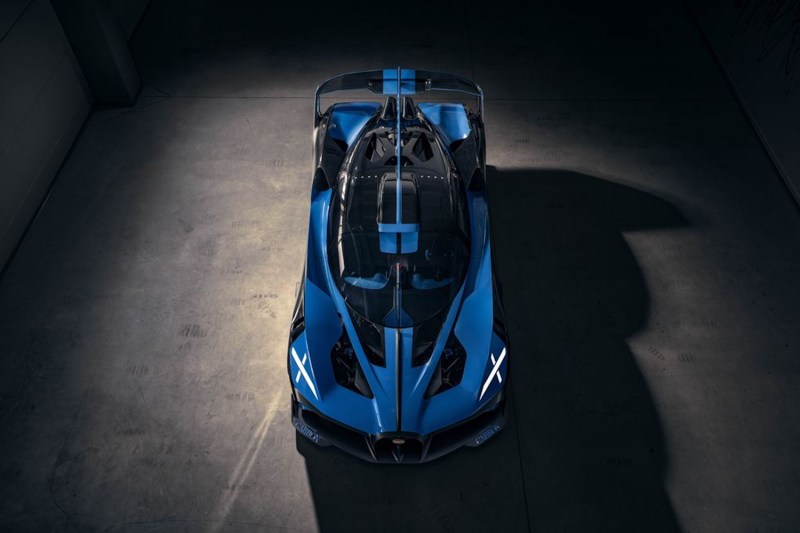
A cross between a spaceship and a Le Mans racer, the Bolide is absolutely bonkers. One of our favorite features is a central fin that starts at the bottom of the roof scoop and flows into the rear wing. Speaking of the rear wing, Bugatti claims it produces roughly 4,000 pounds of downforce at 199 mph. The roof scoop has “morphable outer skin” that remains smooth at low speeds, but bubbles up when the car begins to flow in the air to reduce drag by 10% and lift by 17%.
The Bolide may look crazy and have insane performance figures, but it’s been designed to fully meet the FIA’s safety regulations for a race car. That means owners will find a HANS-compatible device, an automatic fire extinguisher, a bladder fuel tank, and polycarbonate windows. The goal, after all, is to offer its own exclusive track days where owners can really explore the vehicle’s limits without having to deal with traffic.
When the concept came out, Bugatti claimed the Bolide would be able to lap the Nürburgring Nordschleife in 5:23, which would make it 4 seconds slower than the current record holder, the Porsche 919 Evo. The track-only hypercar is expected to be able to lap Circuit de la Sarthe in 3:07, roughly 8 seconds quicker than the Toyota TS050.
Bugatti president Stephan Winkelmann stated that the automaker was done chasing speed records after the Chiron Super Sport became the first production car to hit 300 mph. At the time, we didn’t quite know what Bugatti would focus on next. With the Bolide, it looks like the automaker has found its latest priority: Giving the wealthy a car to set lap records in.
